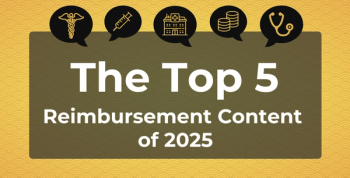
Outcome of Electronic Personal Health Record System Use Among Older Adults
The use of an electronic personal health record-based self-management system can improve patient engagement and reduce costly falls among older adults, according to the results of a new study in eGEMs.
The use of an electronic personal health record-based (ePHR-based) self-management system can improve patient engagement and reduce falls among older adults, according to the results of a
Barbara Sheehan, PhD, RN, PNP, from Intel Corp, and Robert J. Lucero, PhD, MPH, RN, from the University of Florida, Gainesville, tested Self-Assessment via a Personal Health Record (SAPHeR), an ePHR-based falls-prevention self-management system, and evaluated its use by community-dwelling older adults at home.
Fall-associated mortality among older Americans increased by more than 45% from 1999 to 2007, and nonfatal fall-related injuries cost nearly $19 billion in 2000. According to the authors, with the population of older Americans expected to more than double between 2010 and 2030, preventing falls is a high priority.
The SAPHeR system has 4 goals:
- Educate community-dwelling older adults about the importance of fall prevention and support them in creating a safe home environment
- Provide them with guidance on effective physical activities that promote falls risk reduction
- Enable day-today monitoring of their personal and physical activities
- Have them self-assess their confidence in performing selected indoor and outdoor activities that could place them at risk of a fall
The researchers assessed the usability and the feasibility of the system in 2 phases. In the usability phase, the authors recruited 10 adults between the ages of 60 and 78 years. The participants were highly satisfied with the system and strongly agreed about the quality of the interface and the information provided in the system.
In the feasibility portion of the study, the researchers recruited 15 participants, average age of 67 years. They used the system for 8 weeks. Overall, they reported an increase in confidence in performing both indoor and outdoor activities, and the investigators calculated that the system could moderately improve falls self-efficacy.
“The overall outcome was that community-dwelling older adults could benefit from exposure to the SAPHeR system,” the authors wrote. “Specifically, exposure to the system may improve older adults’ confidence in performing everyday indoor and outdoor activities, or falls self-efficacy, thereby reducing their risk of a fall.”
Newsletter
Stay ahead of policy, cost, and value—subscribe to AJMC for expert insights at the intersection of clinical care and health economics.








